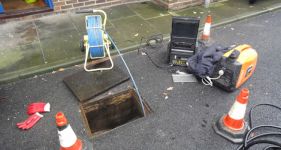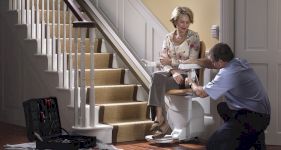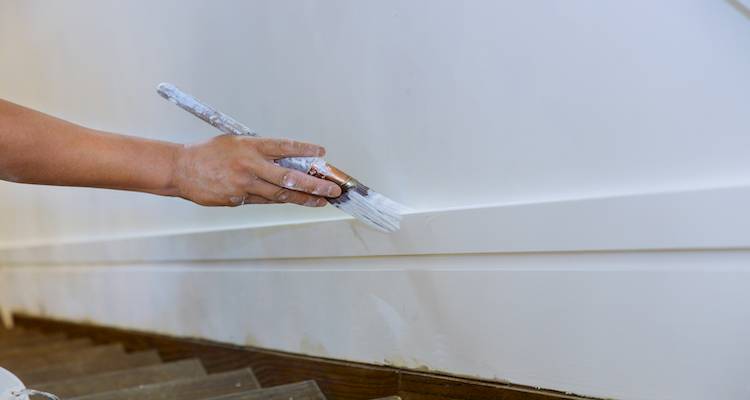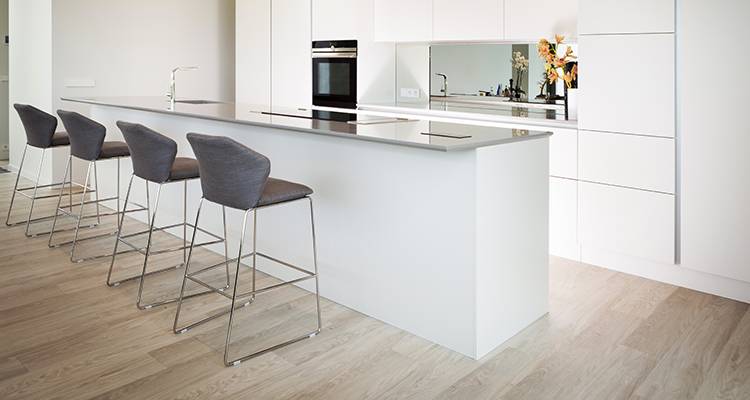Penetrating Damp Treatment Cost
- The average penetrating damp treatment cost is £900.
- Most jobs will take 1 to 5 days to complete.
- Penetrating damp treatment cost by property type.
- How long the job should take and what's involved.
- How to find a damp proofing specialist using MyJobQuote.
In this article, we will go over everything you need to know about penetrating damp treatment costs, including the supply costs, the labour costs, and any additional costs that may come up with penetrating damp treatment.
Want to get a quote now?
Then look no further! We have a wide range of damp proofing specialists ready to offer you a free quote!
We will also go over the process of penetrating damp treatments and offer tips on hiring the right damp proofing specialist for the job.
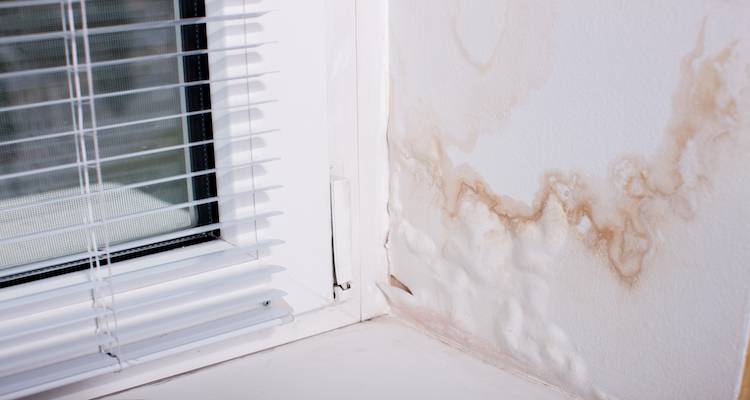
£900
Table of Contents
- How Much Does Penetrating Damp Treatment Cost?
- Supply Only Costs
- Labour Costs and Timescales
- What Impacts Penetrating Damp Treatment Costs?
- Additional Penetrating Damp Treatment Costs
- What's Involved in Penetrating Damp Treatment?
- Penetrating Damp vs Rising Damp
- Can I Treat Penetrating Damp Myself?
- Building Regulations & Planning Permission for Penetrating Damp Treatment
- Types of Penetrating Damp Treatment
- Hiring Contractors for Penetrating Damp Treatment Checklist
- FAQs
How Much Does Penetrating Damp Treatment Cost?
The cost of penetrating damp treatment ranges between £300–£1,500 for a small localised issue, or £1,000–£5,000+ when external repairs are needed.
Several factors determine the damp proof course costs. These include the affected area and the solution. For example, the cost of treating penetrating damp on interior walls may be low, but resolving the root cause may be costly.
Penetrating Damp Internal Wall Treatment
The cost of replastering and decorating after finishing the procedure accounts for a large portion of the total cost. Costs vary significantly between areas and suppliers, but a rough average is around £120–£200 per linear metre of treated wall to roughly 1–1.5m high, or around £400–£600 per wall.
The costs could easily reach several thousand pounds if you need to treat every wall. After the treatment is completed, it may be less expensive to have the plastering or decorating done individually.
External Wall Damp Proofing Costs
If the ground level is higher than the DPC level in the wall, the DPC becomes ineffective, or water can leach directly into the walls, causing dampness. To make sure that this issue does not reoccur, have the ground outside lowered by digging out the soil and then covering it over, for example, with concrete slabs or gravel.
Excavating the soil around a small house and laying gravel on top typically costs £1,000 to £3,000. However, a concrete path can cost up to £2,000 for a smaller home and twice that for a larger home.
Other Damp Proofing Expenses to Think About
As previously stated, it is critical to diagnose the problem accurately when dealing with dampness. When it comes to a severe damp problem, it is always worth speaking to multiple tradespeople, getting quotes, and seeking multiple opinions before beginning an expensive treatment for rising damp.
You can also consult with an independent surveyor to try to diagnose the problem before approaching tradespeople for quotes via a penetrating damp survey. The damp-proofing industry has a bad reputation for companies trying to sell unnecessary, invasive, and expensive treatments — so make sure any work is essential.
What are the different methods of damp proofing and which is the best for a Victorian brick built terraced house?
The drylining method would probably be the best option instead of drilling in a Victorian house due to the age and dependence of the brickwork."
Penetrating Damp Treatment Prices
The table below shows the average penetrating damp treatment prices:
| Property Type | Single Wall | Whole House |
|---|---|---|
| Terrance house | £400-£600 | £2,000-5,000 |
| Semi-detached | £450–£700 | £3,000–£7,000 |
| Detached | £500–£800 | £4,000–£10,000 |
Supply Only Costs
Professional damp specialists use specific materials for treating penetrating dampness. Understanding these supply costs helps you budget for professional treatment.
Mould-removing treatment costs between £6 to £11 per application. Specialists then apply damp seal (£13 to £35) or stain blocker paint (£10 to £13) to ensure staining does not bleed through the emulsion once finished.
Damp proofing injection cream costs approximately £5 to £7 per 100ml, and anti-mould/moisture/damp protecting paint costs approximately £25 per tub.
When you hire a professional, they will use specialised materials typically included in the overall job cost, so these individual supply costs are usually covered in your quote.
Labour Costs and Timescales
A professional damp proofer will typically charge between £100 - £200 per day. The time it takes to complete the work will be determined by several factors, including the size of your home and the scope of the job. Depending on these factors, Damp proofing can take between 1 to 5 days.
Those living in London can also expect to pay higher labour costs than those in other parts of the UK. If you live in London, you can expect to pay around £30 - £70 more per day for labour.
What's the difference between tanking and waterproofing? Which is usually better for basements?
The time it takes to complete the job will vary depending on the type of damp proofing and the size of your home. The damp-proof course itself is usually completed in a single day. After that, however, the contractor will need to replaster the house, which can take several days.
If a tanking slurry is required to repair the damp, it can take at least two days to complete because each coat must dry for at least 24 hours. If damp proofing paint is applied to your home's rooms, this can take 6 - 12 hours per room.
Sometimes, your home may need to be rendered to avoid dampness. Depending on the size of your home, this can take anywhere from 4 to 14 days to complete.
What Impacts Penetrating Damp Treatment Costs?
Numerous factors influence the cost of treating dampness. Therefore, prices can vary so greatly. A lot depends on your specific situation.

Damp Severity
The longer the damp is left untreated, the more damage it will cause. If previous occupants ignored or captured signs of dampness, you may discover a significant amount of damage hidden beneath the surface. When you begin your investigation, you may discover a slew of issues.
If rising damp has been present in multiple locations for an extended period, the damage can be extensive and begin to affect the integrity of the building. However, if the dampness is localised and discovered quickly, the effects can be overturned by simply drying out the affected area.
Treatment Type
The cause of your rising dampness will determine the type of treatment you eventually choose. Some problems are simple to resolve; they may only require moving some earth or removing some plaster or render.
Other treatments may necessitate the removal of a large amount of internal plaster and injecting a new DPC. The more labour-intensive and time-consuming treatments are significantly more expensive.
Size of the Treatment Area
The rising damp may be limited to a small area, depending on what caused it. For example, if an increased soil level is a culprit, it may only be against one section of a wall.
This indicates that the damage is minor and will be inexpensive to repair. On the other hand, in the case of a missing or damaged DPC, you're looking at problems along each external wall, which will multiply the total cost of the job.
Replacing Rotten Wood
If the damp has penetrated your home's timbers, you will be required to pay for the materials required to replace the rotten wood and carpentry skills. These costs can quickly escalate. The higher the damp proofing price, the more wood that has been affected.
Additional Penetrating Damp Treatment Costs
Sometimes extra costs can appear and add to your overall cost. Therefore, we will go through the additional costs, so you know what to expect.
Cost to Plaster a Room
The cost of plastering a room will be determined by the amount and difficulty of the work. A patch repair, for example, may cost between £70 and £130, whereas an over skim may cost between £150 and £200.
The overall plastering cost will also vary depending on room size, with a small room costing £400 to £700, a medium-sized room costing £800 to £1100, and a large room costing £1200 to £1500.
The cost may also vary depending on the plaster you select, as some homeowners may prefer a low-cost plaster while others prefer a long-lasting premium plaster.
Cost to Render a House
On average, house rendering costs between £8,000 and £15,000 for a typical 3-bed. However, the prices you're quoted will depend on the size of your house, any complexity, and the methods that are being used. A tiny bungalow, for example, will cost significantly less than a large, detached property.
Another important factor to consider is the type of rendering processes and equipment used, as these can significantly reduce or raise the total cost of the job.
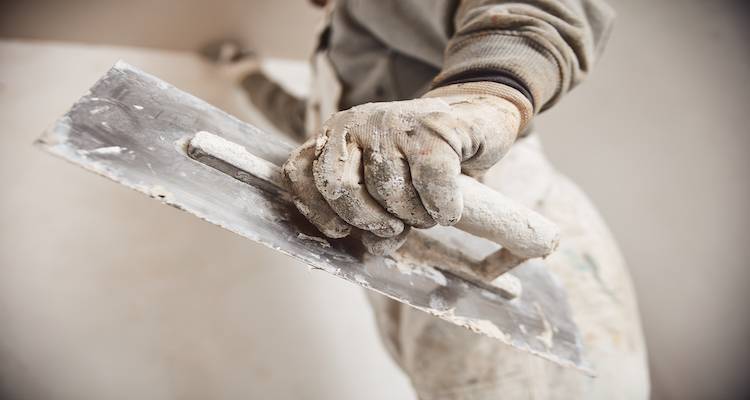
The final process's quality is also essential, whether you save money by doing it yourself or hire a qualified tradesperson and pay a little more for a more skilled position. But, again, these are critical considerations that only you, as the homeowner, can make corrections.
Cost to Replace Skirting Boards
You will almost certainly need to remove your current skirting board for any effective treatment. Some of it may be salvageable, but if damp has penetrated it, it may be rotten.
If this is the case, the skirting board must be replaced. New skirting board costs about £3 to £10 per metre, which means you're looking at cost around £300-£600 to replace all the skirting boards in an average-sized room. This would include estimated labour and supplies.
Cost to Wallpaper a Room
When you have finished repairing the source of the damp, you will most likely be left with a freshly plastered room. This implies that you will have to redecorate.
The average cost to wallpaper a room is around £400 if you hire a professional decorator. You can save a lot of money by doing your own decorating, but using an experienced tradesperson knows how to do this type of job efficiently and effectively.

What's Involved in Penetrating Damp Treatment?
Professional specialists handle penetrating damp treatment by first identifying the source of moisture building up through the external walls of a building.
Your damp proofing specialist will diagnose penetrating damp, which can lead to serious problems such as wood rot, temperature loss, frost damage to masonry, and water damage if not properly addressed by qualified specialists.
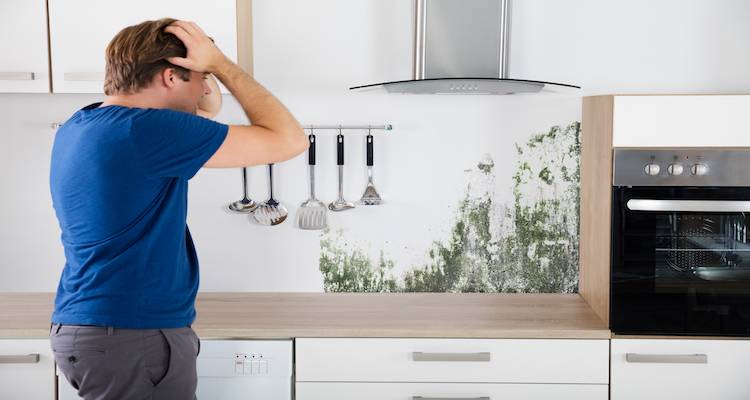
We're looking to purchase a semi-detached 3 bedroom house but the building survey pointed out there's ongoing penetrating dampness in the two rear chimney breasts. Some of the neighbouring properties have damp stains in the same position on the external walls. How much does it cost for the damp proofing work above and turnaround time?
The best way your specialist resolves the penetrating damp problem is to identify the source. They will address various defects including:
- Obstructed or damaged guttering and downpipes - your specialist will repair or clear out gutters and downspouts.
- Damaged windows - your contractor will check windowsills and clean or replace as needed.
- Roof damage - your specialist will replace missing or cracked tiles and refit chimney flashing.
- Cracked render - your contractor will patch with new render or sealant.
- Porous bricks - your specialist will remove and replace damaged bricks or apply waterproofing treatment.
Your contractor will then address internal damage. Once the cause has been eliminated, your specialist can proceed to repair internal damage, replacing plaster with damp-resistant plaster and checking for wet and dry rot issues affecting timbers.
Penetrating Damp vs Rising Damp
Penetrating damp (sometimes referred to as 'water ingress' or 'external damp') occurs when moisture starts to travel from outside into a building. This typically happens through weak spots like damaged walls, broken roof tiles, blocked gutters, or poorly fitted windows.
Rising damp is different problem. This type of damp happens when moisture travels from the ground into the walls. It most often occurs when there's damage to the damp proof course (or it's outright missing).
If you're not sure what problem you're dealing with, submit a few basic details about the job and we'll connect you with damp experts near you. They'll be able to take a look at the problem and advise on next steps.
Here's a quick overview of the differences between penetrating damp and rising damp:
| Outline | Penetrating Damp | Rising Damp |
|---|---|---|
| Type | Horizontal movement into building. | Vertical movement into building. |
| Causes | Moisture getting in via damaged walls, problems with the roof, or via window fitting issues. | Groundwater rises into a permeable structure, typically because the damp-proof course has failed. |
| Symptoms | Water stains, damp patches, or mould on walls, ceilings, or near windows. Can appear anywhere in a property. | Tide lines above skirting board, peeling wallpaper, wet plaster, and mould on walls. Occurs on ground-level, near the floor. |
| Triggers | Wet weather (especially heavy rain). | Winter. |
There are risks if you don't treat penetrating or rising damp.
Over time, it will cause more and more structural damage — which will only become more expensive to deal with.
Beyond this, any type of dampness creates an environment that encourages mould growth. This will not only make things worse for those with existing allergies or health issues, but could cause you problems (e.g., itchy eyes and skin, congestion) even if you're normally not impacted by allergies.
Why might stumps or joists have worn and eroded over time? What can I do about this?
Solution is normally to make sure the damp proof membranes are fitted correctly in the walls to protect all joists/stumps from damp."
Can I Treat Penetrating Damp Myself?
There are ways to solve the problem on your own, as well as some DIY tips to help prevent penetrating damp from causing damage to your property. The key to resolving the penetrating damp problem is locating the problem's source.
Property owners frequently make the mistake of attempting to self-diagnose and treat damp problems. Unfortunately, this frequently leads to misdiagnosis and incorrect treatment, which costs a lot of money to fix the problem and causes further damage to the building.
In addition, the property may be affected by more than one damp issue, in which case the appropriate treatment will be required to eliminate all the damp issues.
I recently cleared out under my stairs and found mould growing along the back wall. After clearing it off with mould spray and bleach, I found the plaster peeling off in the corner. Using a moisture meter I found it to be very damp at least 1.2m high. Will this wall panel need replacing? I also checked moisture content along the skirting board and I think all of it in the cupboard will need replacing.
The best thing to do is to see if the damp is in the wall by drilling 2 small holes and using the prongs on a moisture meter. If there is damp in the wall, it could be rising damp. If not, it's condensation.
Either way, you will need to hack the wall to around 1.5m, tank it, then re-plaster. If it's rising damp, you would need to add a damp course which can be done with dry rod or cream."
A qualified damp surveyor will be able to diagnose and treat the problem from a range of solutions we offer to suit the needs of your specific property care problem.
It is critical to have a specialist conduct a damp survey on your property to rule out any penetrating damp issues. The Property Care Association has fully qualified Timber-wise surveyors.
In addition, our surveyors are CRST (Certified Surveyor in Remedial Treatment) qualified, which means they have received extensive training in providing solutions to all types of damp issues affecting your property.
The surveyor will provide a report on all damp problems discovered during the survey after the damp inspection is completed. This will explain the causes of the problem as well as the treatments required to resolve the penetrating damp issue.
Building Regulations & Planning Permission for Penetrating Damp Treatment
Many people want to check on their damp proofing, so you're probably getting a lot of inquiries and requests for damp surveys and quotations. Because this aspect of home construction and maintenance is essential to a home's durability, health, and safety, so strict regulations must be followed when dampproofing a home.
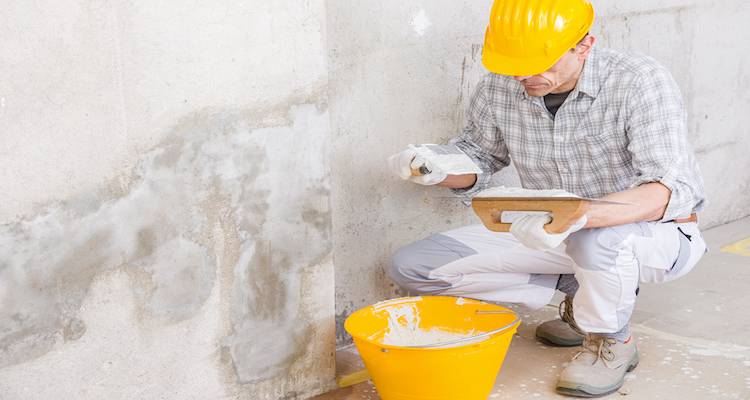
A few centimetres of Damp Proof Course (DPC) or Damp-Proof Membrane (DPM) can make a big difference. This section will review the building regulations and planning permission for penetrating damp treatment.
When constructing new buildings, DPC barriers are required to prevent rising damp, or in some cases, it can also help avoid penetrating damp or water ingress. Different regulations apply to walls and floors due to the different risks and causes of damp - rising damp, penetrating damp, and condensation must all be avoided.
Regulations for Damp Proofing Walls:
- If the DPC is in an external wall, it must be at least 150mm just above the level of the adjoining ground.
- It must also be continuous (no gaps!) with any damp proof membrane on the floor.
If the wall is an external cavity wall:
- The cavity should extend below the damp proof course by at least 225mm.
- Alternatively, a cavity tray with weep holes every 900mm should be provided so that water running down the cavity does not reach the inner leaf.
Generally, damp proofing work is permitted development. However, planning permission may be required if it is part of a larger project. Projects that typically necessitate planning permission include:
- Constructing a new basement.
- Converting an existing basement into a new use.
- Changing a property's exterior appearance.
Furthermore, if your home is listed or on designated land, such as a conservation area, Area of Outstanding Natural Beauty, or national park, any damp proofing work will require planning permission.
If you're unsure whether you should apply for planning permission, the best thing to do is contact your local authority. They will be able to advise you on how to follow the rules in your area.
I suspect penetrating damp on an internal wall. The damage starts above waist height and is spreading horizontally. The skim coat is falling off, revealing a grey, rough cement plaster underneath. Salts are visible, causing more plaster to fall off. What’s the best way to address this issue and redecorate effectively?
If it’s penetrating damp then first you have to find out where it’s coming in from and apply two coats of water proof rendering. If it cannot be applied from the other side, then it has to be stripped your side then applied.
But no matter how many times you try to cover with plaster or paint, if you don’t first stop the penetration it’s going to come back."
Types of Penetrating Damp Treatment
Penetrating damp is a common damp problem encountered by property owners. If you are concerned that your property is damp and that a penetrating damp treatment solution is required, this section will provide the answers you seek.
You will better understand the causes of penetrating damp and the best treatments for it. External flaws in your home are likely to source penetrating dampness. Unfortunately, this can lead to internal issues within your home, including visible signs of dampness and fabric deterioration.
Rendering
A layer is applied to the outer walls when they are rendered. This solution can help you avoid or mitigate penetrating dampness. Less dirt is likely to become stuck on the wall, requiring less frequent cleaning of the facade. To render a house wall, it must be thoroughly cleaned.
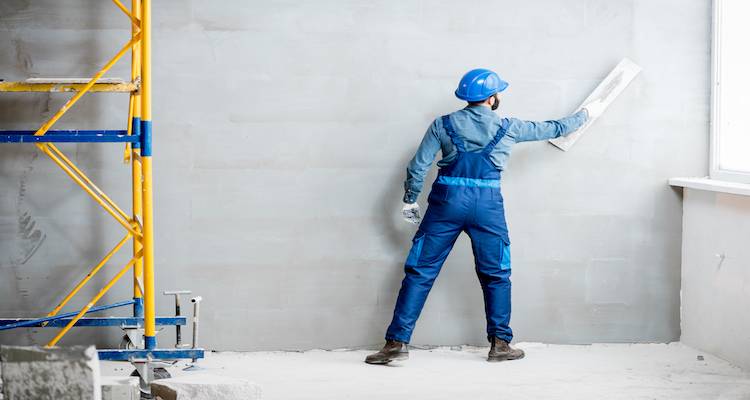
This guarantees that the rendering agent adheres to the surface better. However, before you can begin rendering, you must first repair any cracks or fissures in the wall. Be cautious with this method; if your walls are damp, rendering them can trap water, causing a more significant problem later.
Pros
✔ Dirt is less likely to stick on the walls
Cons
✖ Must maintain it
Exterior Wall with Damp-Proof Paint
There are now paints explicitly designed to protect the facade from dampness. Painting the outside walls can give your house a new look or a different colour.
This solution also requires that the wall be thoroughly cleaned ahead of time. The damp-resistant paint will then adhere better to the exterior wall. This solution is a preventative measure to keep dampness out of the walls, but it can trap dampness already in the walls.
Pros
✔ Good protection
Cons
✖ Can trap damp that is already in the walls
New Cladding for Your House
When the outer wall's condition has deteriorated significantly, and there is usually damp or damp penetrating through the house, you can always choose a new (and waterproof) wall cladding.
This is, of course, a more expensive solution, but it still has several advantages. First, your house will look brand new again, and you can immediately insulate the outside walls; however, you may encounter the previously existing issue of water in the walls- if the water is not removed, it can become a problem later.
Pros
✔ Your house will look brand new
Cons
✖ Expensive
SmartDry Bricks
If you want a long-term solution to penetrating dampness in your home, go with SmartDry and their patented DryBricks. These wall elements combine to form a long-lasting air circulation system that allows for natural ventilation in the home.
The DryBricks ensure that dampness is extracted from the house's walls 24 hours a day, seven days a week, thanks to natural air currents, and it does not rely on external energy sources.
In addition, this solution actively removes the water within the walls, so combining it with repairing the exterior wall or guttering will permanently resolve your damp issues.
Pros
✔ Long-term solution
Cons
✖ None
Freestanding
The most effective dampness solution may be to take measures to allow an old building to 'breathe'. This entails encouraging moisture to evaporate quickly and efficiently rather than attempting to keep it at bay.
It will almost always involve traditional methods and materials rather than their modern equivalents. Limewash is ideal for the job because it is more damp-tolerant and highly permeable. A soft distemper can be used in some cases, but it is not recommended for damp walls.
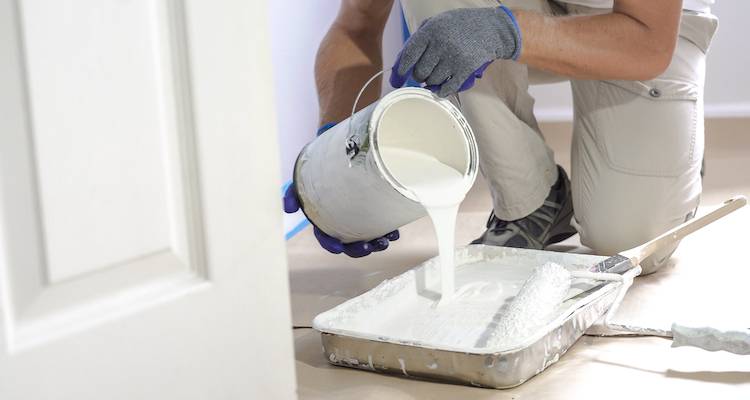
When redecorating typical solid walls, use vapour-permeable paints such as soft distemper. Impervious materials should ideally be removed, but this may not be possible without causing additional damage, so that a compromise may be required.
Pros
✔ Natural
Cons
✖ Expensive
Hiring Contractors for Penetrating Damp Treatment Checklist
Because the causes of dampness can be challenging to determine, you must be able to trust your contractor. Here are some things to think about when selecting a damp proofer.
- Look for a contractor with a lot of positive feedback or who is willing to put you in touch with previous customers. People who have been duped will not be afraid to speak up.
- Make sure you choose a contractor with whom you can easily communicate. Because many hidden issues can arise with this type of work, you should work with someone who will be honest with you about problems, solutions, and costs.
- Inquire about a guarantee. Any reputable damp proofer will be willing to provide a guarantee on their work.
FAQs
What are the signs of penetrating dampness?
- The plaster will show signs of damage when exposed to penetrating dampness. The reason for this is that moisture degrades the quality of the plaster
- Localised Dampness: Penetrating damp will cause patches of localised damp in various parts of the property. No matter what damp proofing method is used, these damp patches will not dry
- Mould Growth on Walls: Mould growth on walls is often a sign of condensation, but it can also be penetrating damp. As a result, it is recommended to hire a damp specialist to diagnose the damp problem properly
- Wet rot in timber: Timber floors and walls affected by penetrating damp can show signs of wood rotting, causing severe damage to the building's infrastructure
- Damage to the property's internal décor: If the inner walls of the property and the decorations associated with them have become discoloured or damp, your property is most likely suffering from penetrating dampness



